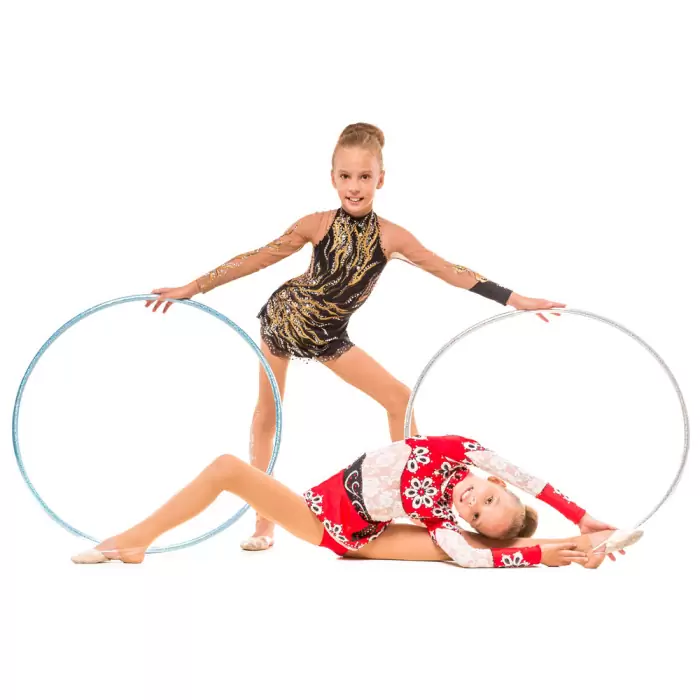Rhythmic gymnastics is a sport that combines elements of ballet, gymnastics, dance, and apparatus manipulation. This enchanting discipline requires precision, grace, and flexibility, as well as a set of specific equipment tailored to beginners. Here, we explore the essential gear every novice rhythmic gymnast should have to start their journey.

Importance: A leotard is the most iconic piece of attire in rhythmic gymnastics. It allows judges to clearly see the gymnast’s movements and ensures the athlete performs with comfort and freedom.
Recommendation: Beginners should opt for simpler, less expensive leotards that are durable and comfortable. Look for materials like Lycra or a cotton blend, which provide sufficient stretch and support.
Footwear
Importance: Proper footwear is crucial in rhythmic gymnastics to protect the feet and provide necessary grip on the performance surface.
Recommendation: Half shoes or toe shoes made of soft leather or cloth are ideal. These should fit snugly to enhance the appearance of pointed toes, a critical element in the aesthetics of the sport.
Gymnastics Balls
Importance: The ball is one of the apparatus used in rhythmic gymnastics, suitable for rolling, bouncing, and throwing, which helps develop coordination and skill.
Recommendation: Beginners should start with a rubber gymnastics ball that is around 15-20 cm in diameter, ensuring it is neither too heavy nor too light to manage.
Ropes
Importance: The rope, made of hemp or synthetic material, is used for jumps and swings. It is excellent for improving timing and precision.
Recommendation: The length of the rope should be in proportion to the height of the gymnast. It’s advisable to choose a rope that reaches the shoulders when folded in half.
Hoops
Importance: The hoop aids in the development of dexterity and coordination. Manipulations include rotations, rolls, throws, and passes through and over the hoop.
Recommendation: Lightweight plastic hoops are best for beginners. The diameter should ideally be between 80-90 cm, depending on the size of the gymnast.
Clubs
Importance: Clubs are used to perform mills, throws, and asymmetric movements, which enhance rhythm and coordination.
Recommendation: Beginners should choose plastic clubs for their durability and lighter weight, which make them easier to handle.
Ribbons
Importance: The ribbon allows for the execution of spirals, swings, circles, and throws. It is essential for developing fluidity and grace.
Recommendation: A ribbon stick should be about 50-60 cm long, with a ribbon of 4-6 meters in length, made of satin or a similar material for better flow and movement.
Mats
Importance: Safety is paramount, and mats provide the necessary cushioning to prevent injuries during practice.
Recommendation: A good quality foam mat with adequate thickness (at least 2 cm) is crucial, especially when practicing jumps or throws.
For rhythmic gymnastics beginners, having the right equipment is the foundation of safe and effective training. This guide outlines the essential tools required to embark on this artistic and physically demanding journey. While the focus at this stage is on functionality and comfort, as skills improve, gymnasts can begin to explore more specialized and decorative equipment. Every piece of equipment plays a significant role in developing the fundamental skills necessary for this elegant sport.




